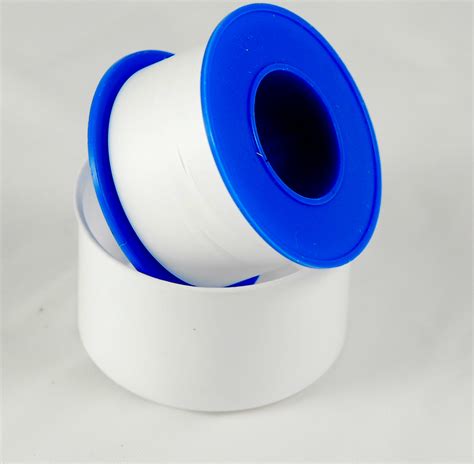What is PTFE?
PTFE, or polytetrafluoroethylene, is a synthetic fluoropolymer of tetrafluoroethylene. It is a high-molecular-weight compound consisting of carbon and fluorine atoms. PTFE has unique properties that make it valuable in various industries.
Properties of PTFE
- Non-reactive: PTFE is chemically inert and resistant to most chemicals, acids, and bases.
- Low friction coefficient: PTFE has one of the lowest friction coefficients of any solid material.
- Hydrophobic: PTFE is highly hydrophobic, meaning it repels water and other liquids.
- Wide temperature range: PTFE can maintain its properties in temperatures ranging from -200°C to 260°C.
- Non-stick: PTFE’s low surface energy makes it non-stick, preventing materials from adhering to its surface.
Applications of PTFE
Due to its unique properties, PTFE finds applications in various industries:
| Industry | Application |
|---|---|
| Automotive | Gaskets, seals, and bearings |
| Chemical processing | Valve linings, pump parts, and tubing |
| Electrical | Wire and cable insulation |
| Cookware | Non-stick coatings for pans and utensils |
| Medical | Implants and surgical equipment |
What is Teflon?
Teflon is a brand name for a group of products containing PTFE, owned by the Chemours Company. Teflon was first discovered by Roy Plunkett, a chemist at DuPont, in 1938. Since then, it has become a household name, primarily associated with non-stick cookware.
Teflon and its products
Teflon is used in various products, including:
- Teflon™ Non-Stick Coatings: Used in cookware, bakeware, and small appliances.
- Teflon™ Fabric Protector: A treatment for textiles to repel water, oil, and stains.
- Teflon™ Industrial Coatings: Used in automotive, aerospace, and electronics industries for their non-stick and low-friction properties.
Similarities between PTFE and Teflon
- Chemical composition: Both PTFE and Teflon are made of polytetrafluoroethylene.
- Properties: PTFE and Teflon share the same unique properties, such as non-reactivity, low friction, hydrophobicity, and wide temperature range.
- Applications: PTFE and Teflon are used in similar industries and applications, particularly where non-stick and low-friction properties are required.

Differences between PTFE and Teflon
- Brand name: Teflon is a brand name owned by the Chemours Company, while PTFE is the generic name for the chemical compound.
- Product range: Teflon encompasses a range of products containing PTFE, while PTFE itself is the raw material used in various applications.
- Public perception: Teflon is more widely recognized by the general public due to its association with non-stick cookware, while PTFE is more commonly used in industrial and technical contexts.
FAQ
-
Q: Is Teflon safe to use in cookware?
A: When used according to manufacturer’s instructions, Teflon-coated cookware is generally considered safe. However, overheating Teflon-coated pans can cause the coating to break down and release harmful chemicals. It’s essential to use Teflon-coated cookware at low to medium heat and avoid scratching the surface. -
Q: Can PTFE be recycled?
A: PTFE is difficult to recycle due to its high melting point and chemical inertness. Most PTFE products end up in landfills or are incinerated. However, some companies have developed methods to recycle PTFE waste, such as converting it into micro-powders for use in other applications. -
Q: Are there any alternatives to PTFE and Teflon in cookware?
A: Yes, there are several alternatives to PTFE and Teflon in cookware, including: - Ceramic-coated cookware
- Stainless steel cookware
- Cast iron cookware
- Enameled cast iron cookware
-
Glass cookware
-
Q: Can PTFE be used in medical applications?
A: Yes, PTFE is widely used in medical applications due to its biocompatibility, non-reactivity, and low friction properties. Some examples include: - Vascular grafts
- Hernia meshes
- Catheter coatings
- Surgical sutures
-
Dental floss
-
Q: How long does Teflon coating last on cookware?
A: The lifespan of Teflon coating on cookware depends on various factors, such as usage frequency, cooking methods, and care. On average, Teflon-coated cookware can last between 3 to 5 years with proper use and maintenance. Signs that the coating may be wearing out include flaking, chipping, or scratching of the surface.
Conclusion
In conclusion, while PTFE and Teflon are often used interchangeably, they are not exactly the same. PTFE is the chemical compound polytetrafluoroethylene, while Teflon is a brand name for a range of products containing PTFE. Both share the same unique properties and find applications in various industries, particularly where non-stick and low-friction properties are desired.
As a consumer, it’s essential to understand the proper use and care of PTFE and Teflon products, especially in cookware, to ensure safety and longevity. With ongoing research and development, the future may bring more sustainable alternatives to PTFE and Teflon, addressing concerns about their environmental impact and potential health risks.

No responses yet